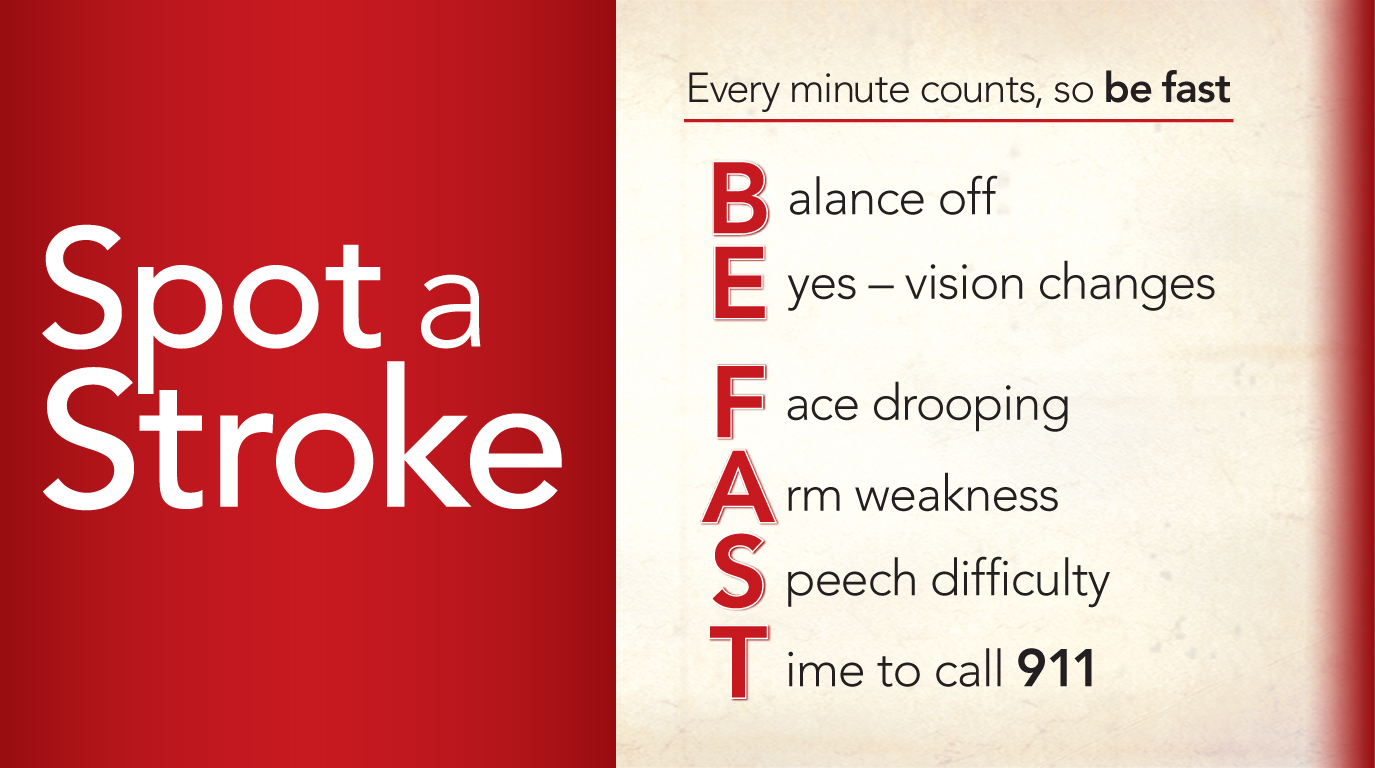Monday, December 2, 2019
Recognizing the Warning Signs of Stroke: BE FAST

As a Certified Primary Stroke Center, San Juan Regional Medical Center is ready to handle a full range of stroke-related medical problems. We are also committed to providing the community with stroke education. It is essential for everyone in the community to recognize the warning signs of stroke. Early detection leads to rapid intervention, which increases the chances of a full recovery.
According to the National Stroke Association, stroke is a leading cause of death, taking nearly 130,000 lives each year, and is a leading cause of serious, long-term, preventable adult disability. Because stroke or “brain attack” effects blood flow to the brain, rapid and effective treatment can save lives and provide the best chance of limiting the extent of long-term irreversible damage.
“It’s kind of like a heart attack,” said Tina Biberdorf, Stroke Coordinator. “If we can identify it early and get blood flow restored, that’s the brain tissue that we can recover, that’s the tissue that will come back.”
Time is brain and every minute counts, so remember BE FAST.
“B and E are sudden changes, a sudden onset of balance lost. Somebody’s walking and all of a sudden they lose their balance and can’t get up because of weakness,” Biberdorf said. “Vision changes, this isn’t like I need to go to the eye doctor, this is me talking to you right now and suddenly I only see part of your face. It could last a few minutes; it could last a few hours.”
To check for face drooping, ask the person to smile. If one side doesn’t work, this is a sign of stroke. To check for arm weakness, ask the person to hold out their arms. If one doesn’t come up or doesn’t move at all, that’s a symptom. This could also be legs. Speech difficulty could include no speech, slurred speech or having difficulty talking.
“One of the symptoms is about a 73 percent chance that the person is having a stroke, so the T is for time, it’s time to call 911,” Biberdorf said.
At San Juan Regional Medical Center, when a patient arrives at the emergency room and a stroke is suspected, a “stroke alert” is called. This notifies all of the appropriate departments within the hospital and prioritizes the patient’s emergent needs so intervention can happen as soon as possible.
To learn more about obtaining further stroke education, please contact Tina Biberdorf, Stroke Coordinator at tbiberdorf@sjrmc.net or 505.609.6431.